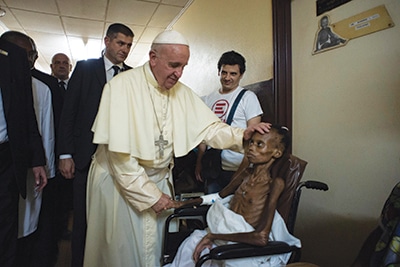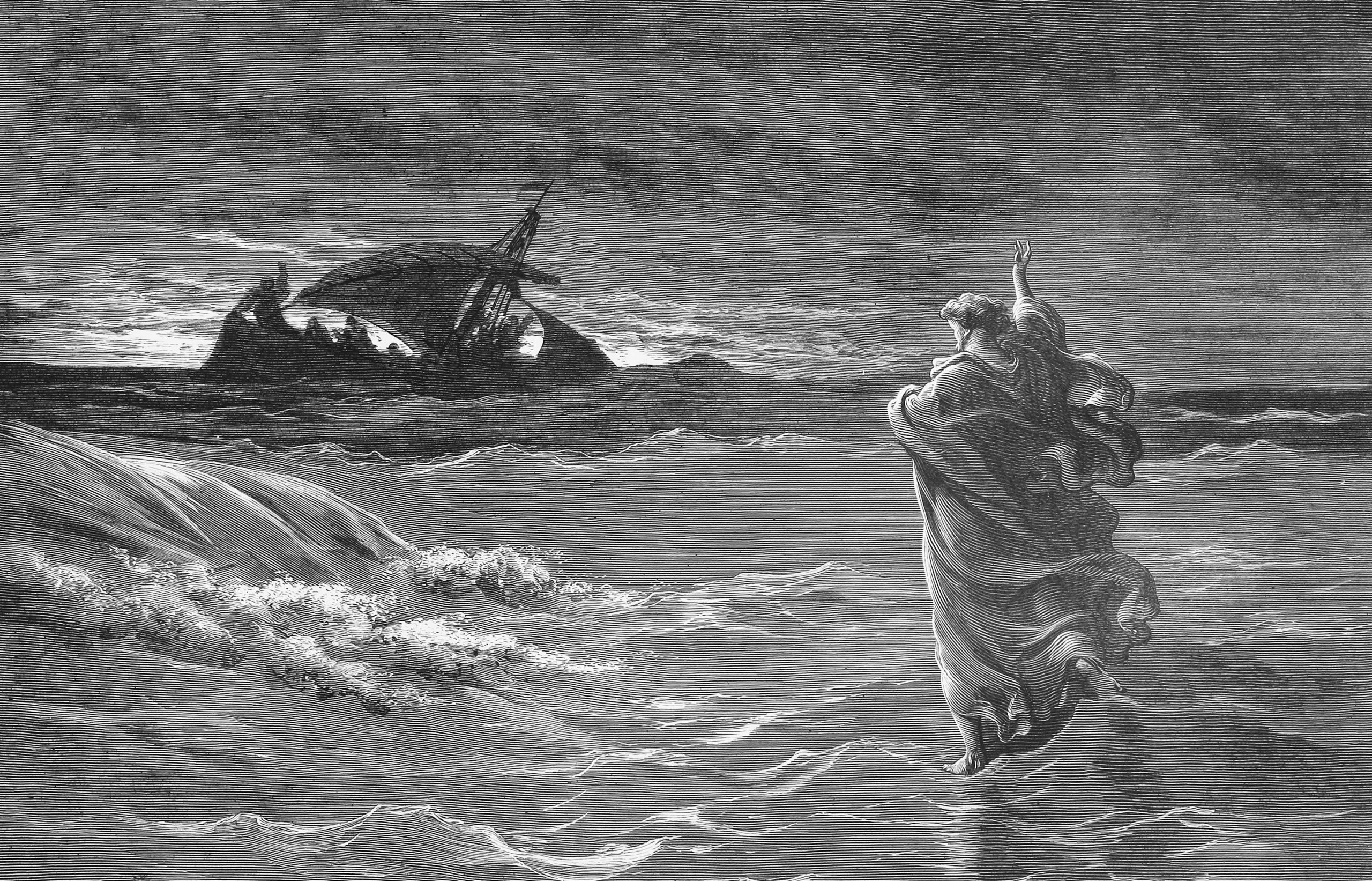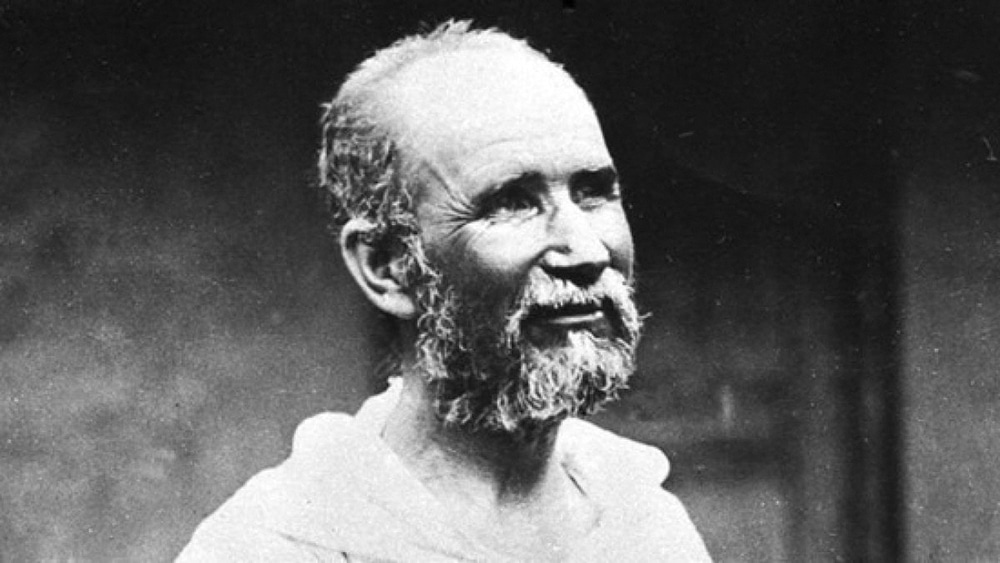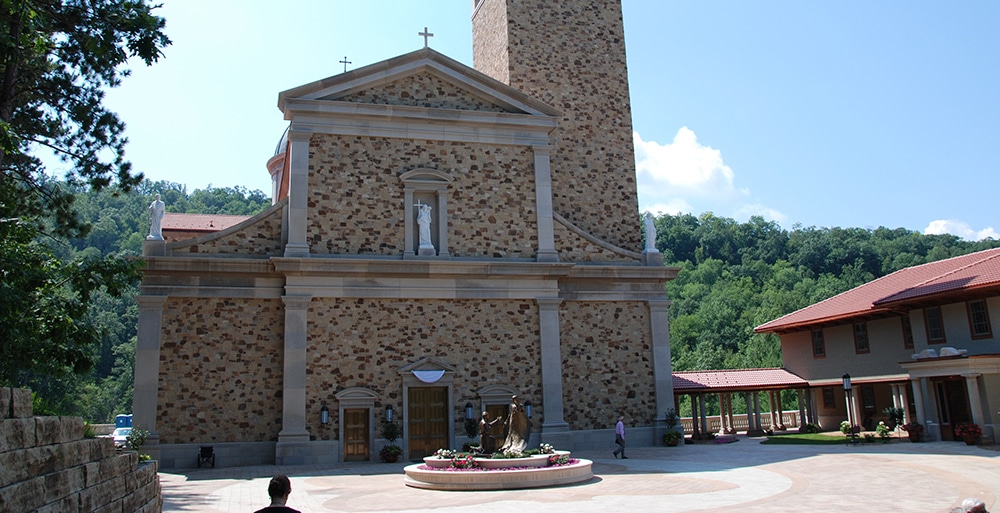Sitting at my duck pond in the mornings, I have begun to notice what philosophers of the more pessimistic persuasion than I noticed long ago: nature is harsh. As I observe the “bullyish” large robin attacking his runty neighbor with his clawed feet and batting his wings, I see Thomas Hobbes’ point about nature being “war of all against all.” A hundred years later, Darwin echoed the sentiment, summarizing the law of life, to “multiply, vary, let the strongest live and the weakest die.” In Hobbes and Darwin’s dog-eat-dog worlds, to be weak is a death sentence.

Walking down stretches of empty city sidewalk, in the eerie calm of a metropolis stripped bare by a pandemic, I feel more exposed to nature than when usually insulated by the buffer of Manhattan’s exhaust of human life, smoke and neon light. Walking down Broadway, I notice two sparrows grappling. “Hey,” I scold them, trying to separate them, like a teacher in a schoolyard.
As I sip my morning coffee, mallard drakes chase each other across the pond, snapping at tail feathers. A team of enterprising blue jays swoop around the drowsy head of a red-tailed hawk perched on the water’s edge. They pester the potential predator until he flies off in a huff. A gaggle of precious ducklings quack motherless around the scum-riddled pond water, orphaned by the self-satisfied snapping turtle ambling through the weeping willow shadows to my right, who ate their mother for lunch.
I see where Hobbes was coming from with the diagnosis of “poor, nasty, brutish and short.”
Hobbes’ estimation of the state of nature also seems to be an apt diagnosis for our brutal news cycles filled with stories of unspeakable violences being done to others. I understand the sense of helplessness and the outrage — outrage at pain and injustice we somehow cannot stop.
In our wilderness society, carved out by rugged violence, tenderness is not a highly valued public virtue. As such, our response to violence can often become scarred, harsh and bitter. But tenderness, a quality deeply associated with animal nature and yet foreign to nature, makes room for gentler, more powerful responses to pain.

Tenderness and God’s love
Two years ago, Pope Francis convened a conference on the theology of tenderness, as present in his own theology. While not a much-discussed virtue in theology classrooms, tenderness, in the Scriptures, is consistently ascribed to God, particularly in the Hebrew Scriptures. “For a brief moment I abandoned you, but with great tenderness I will take you back” (Is 54:7).

In his opening address, Francis speaks of tenderness as a feeling, which it certainly is. Tenderness is a deeply subjective experience of interpersonal relationship. But tenderness is more than simply a feeling or an affective experience. Tenderness is an action of God’s love that we can imitate.
In the same address, Francis claims tenderness is a powerful starting place for theology in the contemporary world. “Tenderness, then, far from being reduced to sentimentalism, is the first step to overcome the withdrawal into oneself, to leave behind the self-centeredness that disfigures human freedom.” Tenderness is always relational in shape and speaks to our experience as an embodied human creature.
Our first biological experiences of tenderness are bonding with our mothers. Thus tenderness is often regarded as a quality of the feminine, bound up in our primordial memories of breastfeeding and maternal nurturing. Additionally, tenderness is biologically associated with the preservation of youth. Skin that is tender and soft is skin that has retained its full measure of elastin and collagen. Older skin sags and wrinkles. Skin that has been sliced open toughens and stiffens, creates hard ridges of scars to cover the cut. Skin that is wounded, that is weathered, toughens up.
The sort of tenderness that Pope Francis describes is not a biological trait, but, like all virtues, a choice. Just as natural tenderness springs from a deep memory of the original tenderness received from a mother, the virtue of tenderness that Pope Francis speaks about is an action of graced memory. Tenderness recalls an origin deeper than our biological origins. Our decision to act with tenderness recalls the tenderness of God’s love, our deepest origin.
Intertwined in divine love
Although, in nature, tenderness is directly opposed to woundedness, Julian of Norwich portrays the two as intertwined in divine love. Throughout her revelations, the English mystic Julian of Norwich describes Christ as tender and as motherly. In Julian’s visions, Christ’s tenderness and Christ’s motherhood are both directly linked to his wounded side. Julian’s famous vision from the Tenth Showing relates “with a kindly countenance our good Lord looked into his side” and in his side, “by the same wound; [he] revealed a fair and delectable place, large enough for all mankind that will be saved and will rest in peace and in love.” Christ’s wound is a testament to and a site of his love that makes space for every human, and tenderly cradles us all.
Just as a mother feeds her child from her breast, so Christ feeds his children through his side. Julian continues, “The mother can lay her child tenderly to her breast, but our tender Mother Jesus can lead us easily into his blessed breast through his sweet open side.” Christ’s side, according to Julian, is an inexhaustible witness to Christ’s care that proclaims, “See how I love you.” The biological tenderness that children learn from their mothers while suckling we learn from Christ’s side, broken open for us in vulnerable love.
Julian’s emphasis on Christ’s side as an image of his Eucharistic love echoes a common medieval symbol of Christ: the pelican feeding her young with blood from a wound she pierces in her own side. By his stripes we are healed, says the Isaiah. And from his side, we are fed.
A font of love
The resurrected body of Christ remains wounded. Christ’s wounds never scar over, they are never closed, rather, they remain open for eternity. The Eucharist is, like the pelican’s side, Christ’s untiring breaking open of his own flesh for his Mystical Body. Although the historical moment of Christ’s sacrifice is completed, once and for all, his wounds are the font of life, the eternal source of living water for the Church community. Christ’s vulnerability is never a moment he moves beyond. Like helpless pelican chicks, we feed from his side. And, like the mother, he generously and tenderly feeds us.
The witness of Christ’s tender wounds proclaims that wounds do not preclude tenderness. Christ’s tenderness is mightier than the wounds the world deals out to him. His meekness transforms the wounds he receives into a font of love for us.
Those who, in the face of the brutality of the world, can still remain tender imitate Christ’s resurrected body. The virtue of tenderness proclaims that even in the face of sin and death, love is still possible. Tenderness is the virtue that imitates Christ’s decision not to inflict back on the world the violences received from it. Christ’s wounds call to us to respond to the evils of the world with tender love.
Our God of Love endured the assaults of the cross and responded with new life, with a new shape of union between the human and God. The wounds he sustained remain, but not as a sign of death’s victory. Rather, Christ’s wounds witness to divine love that can persist, even into the grave. Christ’s wounds remind us that no wound, not even death, can thwart the tender love that made us and still seeks us. Love will not be thwarted by any wound to reach us.
Along with Julian, Christ draws us to his sweet side, to feed on his love and pour out his divine tenderness into a scarred and warring world.
Renée Darline Roden writes from New York.







